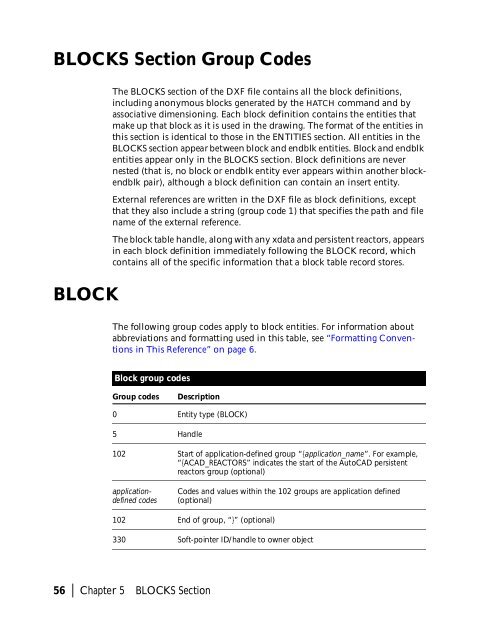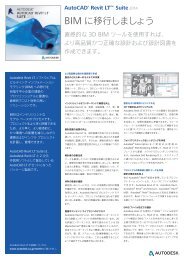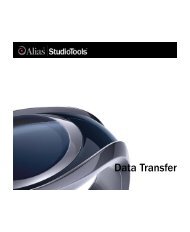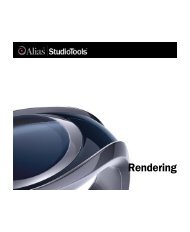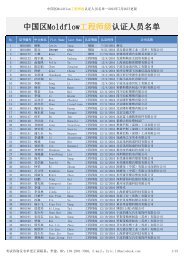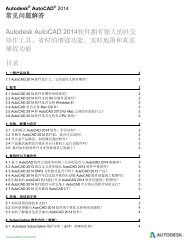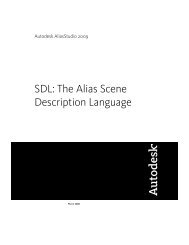You also want an ePaper? Increase the reach of your titles
YUMPU automatically turns print PDFs into web optimized ePapers that Google loves.
BLOCKS Section Group Codes<br />
BLOCK<br />
The BLOCKS section of the DXF file contains all the block definitions,<br />
including anonymous blocks generated by the HATCH command and by<br />
associative dimensioning. Each block definition contains the entities that<br />
make up that block as it is used in the drawing. The format of the entities in<br />
this section is identical to those in the ENTITIES section. All entities in the<br />
BLOCKS section appear between block and endblk entities. Block and endblk<br />
entities appear only in the BLOCKS section. Block definitions are never<br />
nested (that is, no block or endblk entity ever appears within another blockendblk<br />
pair), although a block definition can contain an insert entity.<br />
External references are written in the DXF file as block definitions, except<br />
that they also include a string (group code 1) that specifies the path and file<br />
name of the external reference.<br />
The block table handle, along with any xdata and persistent reactors, appears<br />
in each block definition immediately following the BLOCK record, which<br />
contains all of the specific information that a block table record stores.<br />
The following group codes apply to block entities. For information about<br />
abbreviations and formatting used in this table, see “Formatting Conventions<br />
in This Reference” on page 6.<br />
Block group codes<br />
Group codes<br />
Description<br />
0 Entity type (BLOCK)<br />
5 Handle<br />
102 Start of application-defined group “{application_name”. For example,<br />
“{ACAD_REACTORS” indicates the start of the AutoCAD persistent<br />
reactors group (optional)<br />
applicationdefined<br />
codes<br />
Codes and values within the 102 groups are application defined<br />
(optional)<br />
102 End of group, “}” (optional)<br />
330 Soft-pointer ID/handle to owner object<br />
56 | Chapter 5 BLOCKS Section


